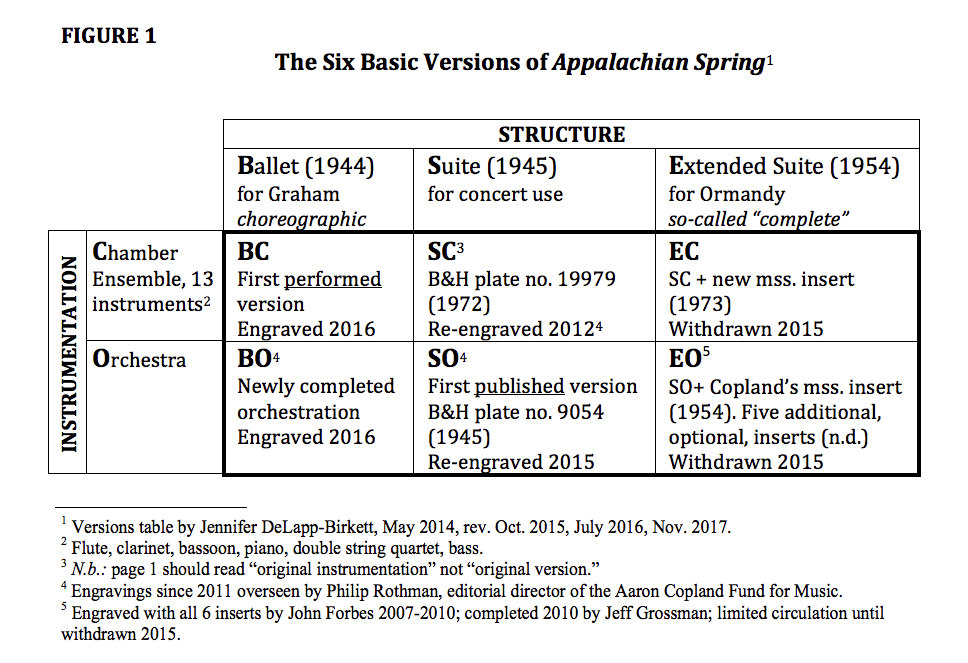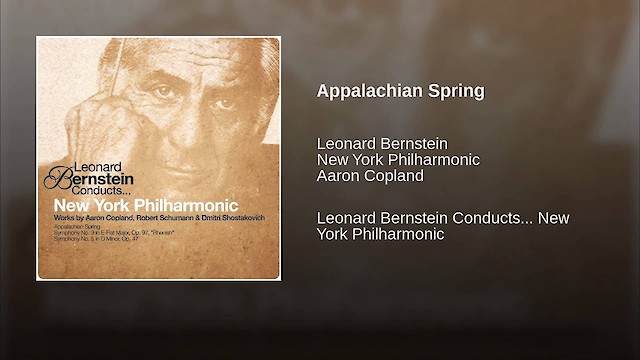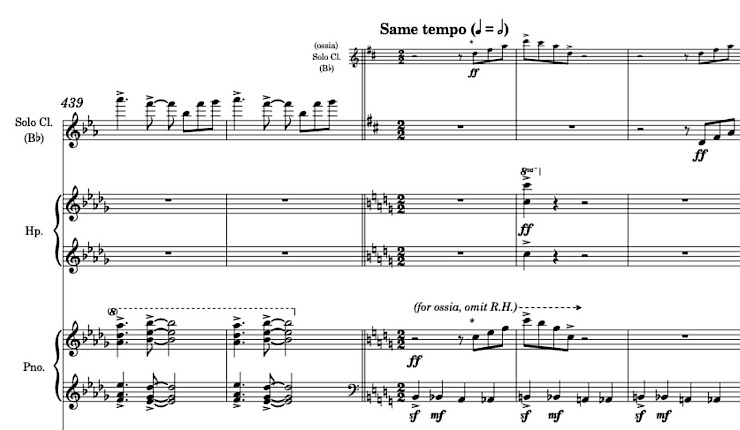Critical editions offer so much more than just the notated score. Explore what makes these editions unique with Jennifer DeLapp-Birkett as she walks us through her MUSA edition of Appalachian Spring.
Read moreThe ballet score Appalachian Spring was composed in 1943 and 1944 for Martha Graham and her dance company, who gave the premiere October 30, 1944 at the Library of Congress’s Coolidge Auditorium. Copland scored the ballet for thirteen instruments, the largest number that could comfortably fit into the pit.
In 1945, he extracted a suite from the ballet, cutting nearly ten minutes of music from the thirty-minute ballet, and scoring it for full-sized orchestra. In addition to a single large cut of about eight minutes, the suite presents the famous “Simple Gifts” variations in a different order, with some variations in a different key as well. For decades, inconsistent nomenclature caused confusion about the exact musical contents of the ballet vs. the suite. A “complete suite” emerged in the 1950s which restored the longest cut but left the changes to the variations and some other cuts in place. Thus, many recordings are incorrectly described as the “complete” ballet when in fact they do not match the 1944 ballet choreography. In 2014, the Copland estate reevaluated the available performance materials, withdrew two from circulation, and re-issued four. Figure 1 below shows the six basic versions of Appalachian Spring. The Extended Suite versions (EC and EO) have been withdrawn. The currently authorized and available versions are the Ballet and Suite versions: BC, BO, SC, and SO.

The Six Versions of Appalachian Spring
BC (Ballet for Chamber ensemble)
- Score created for Graham (1944)
- Fits Graham choreography
- First performed version
- Score first published in 2020
- 30-33 minutes
- Appalachian Spring (ballet in one act for thirteen instruments)
BO (Ballet for Orchestra)
- Same structure as 1944 score for Graham
- Fits Graham choreography
- Newly completed orchestration (2016)
- Engraved 2016
- 30-33 minutes
- Appalachian Spring (ballet in one act for full orchestra)
SC (Suite for Chamber ensemble)
- Structure created for concert use (1945)
- SO rescored for chamber ensemble (1972)
- B&H plate no. 19979 (1972)
- Re-engraved 2012
- 20-25 minutes
- Appalachian Spring (suite for thirteen instruments)
SO (Suite for Orchestra)
- Structure created for concert use (1945)
- First published version
- B&H plate no. 9054 (1945)
- Re-engraved 2015
- 20-25 minutes
- Appalachian Spring (suite for full orchestra)
EC (Extended Suite for Chamber ensemble)
- Structure created for Ormandy (1954), adapted for chamber ensemble
- Often called “complete” but does not match Graham choreography
- SC + new manuscript insert (1973)
- Withdrawn 2015
- 25-35 minutes
EO (Extended Suite for Orchestra)
- Structure created for Ormandy (1954)
- Often called “complete” but does not match Graham choreography
- SO + Copland’s 1954 manuscript insert
- Five additional optional inserts
- Withdrawn 2015
- 25-35 minutes
Versions chronology (1944-2019)
1944
- BC completed and premiered; not published. ARCO 55 in Copland’s cataloguing system, Library of Congress.
- BC limited availability as copy of holograph score 1991-2018.
1945
- SO completed, published, and premiered. Suite structure ©1945. Published 1945, B & H plate no. 9054.
- SO Premiere: A. Rodzinsky/New York Philharmonic.
1954
- EO arises when Copland creates insert restoring longest cut. First performance uncertain.
- Lawrence Morton also requests additional versions in 1954.
1954-57
- EO expanded with five new, shorter inserts. (Copyist creates inserts 1-5; Copland renumbers his #6.)
- Ormandy records EO for Columbia label using inserts #5 and #6. (Tilson-Thomas, Slatkin, and Miller later record other EO variants.)
1970
- SC authorized and performed.
- Copland conducts first SC performance at Los Angeles County Museum of Art, 14 August 1970 at Lawrence Morton’s invitation.
1972
- SC published. B & H plate no. 19979 (1972).
- EC requested by Michael Charry, Kansas City Philharmonic.
- EC insert for thirteen instruments created. Manuscript insert created to supplement B & H 19979.
1973
- EC premiered by Michael Charry, Kansas City Philharmonic, 7 January 1973.
2012
- SC is re-engraved.
2015
- New engraving of SO completed.
- EC and EO are withdrawn.
2016
- BO completed and performed. Fifty measures newly orchestrated by David Newman.
- BO Professional premiere 9 June 2016, Baltimore Symphony.
2019
- New engraving of BC completed.
2020
- BC published in its first scholarly edition, MUSA v.31 (Music in the United States of America), Jennifer DeLapp-Birkett and Aaron Sherber, co-editors.
- New engraving of BC performance materials released.
This page was originally compiled and published in 2019 and revised in July 2022.
- Author
- Jennifer DeLapp-Birkett, PhD
- Year
- 2022









